

Dairy Grazing: Selecting the Right Forage, Page 17
Reviewed
Indiangrass is a warm-season, perennial grass offering quality forage and wildlife habitat. Best grown in mixtures, it thrives statewide with proper management.
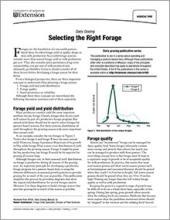
Dairy Grazing: Selecting the Right Forage, Page 32
Reviewed
The publication offers guidance on selecting the right forage for dairy grazing, including various types of grass and their yield, quality, and persistence.
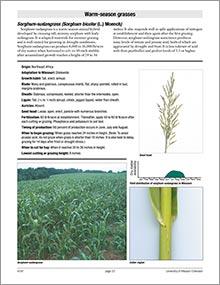
Dairy Grazing: Selecting the Right Forage, Page 20
Reviewed
Learn about sorghum-sudangrass, a warm-season annual hybrid ideal for summer grazing, known for high yield and drought tolerance.
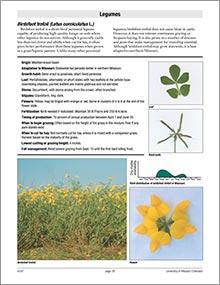
Dairy Grazing: Selecting the Right Forage, Page 23
Reviewed
Learn to choose the right forage for dairy grazing, with details on various legumes, grasses, and management tips for better productivity and sustainability.
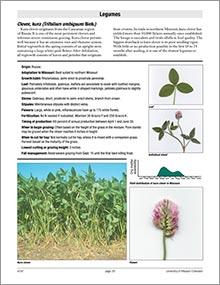
Dairy Grazing: Selecting the Right Forage, Page 26
Reviewed
Crimson clover is a high-protein legume ideal for early spring grazing. Learn about its growth, benefits, and ideal conditions for effective dairy grazing.
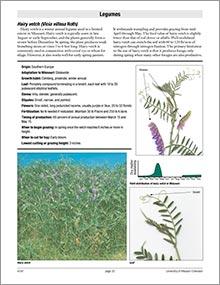
Dairy Grazing: Selecting the Right Forage, Page 29
Reviewed
Red clover, a short-lived perennial legume well-suited for Missouri pastures, offering high-quality forage and adaptability to less-than-ideal soil conditions.

Dairy Grazing: Selecting the Right Forage, Page 03
Reviewed
Forage selection for dairy grazing, focusing on Kentucky bluegrass, its growth, management, and benefits. Ideal for grazing systems in northern regions.

Dairy Grazing: Selecting the Right Forage, Page 06
Reviewed
Discover the characteristics, growth habits, and management practices for prairiegrass (Bromus wildenowii Kunth) in dairy grazing systems.
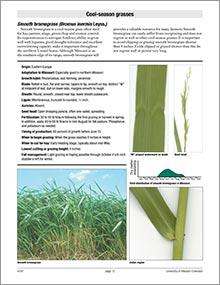
Dairy Grazing: Selecting the Right Forage, Page 09
Reviewed
Discover the benefits of Smooth bromegrass for dairy grazing, including its growth habits, adaptability, and tips for optimal management.
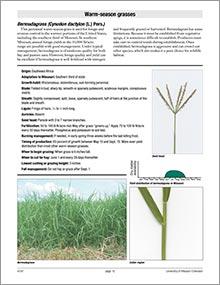
Dairy Grazing: Selecting the Right Forage, Page 12
Reviewed
Explore tips on selecting and managing bermudagrass for dairy grazing. Learn about its growth habits, yield, and care for optimal forage production.

Dairy Grazing: Selecting the Right Forage, Page 15
Reviewed
Crabgrass is a high-quality, warm-season forage that thrives in various conditions, offering valuable nutrition for livestock.
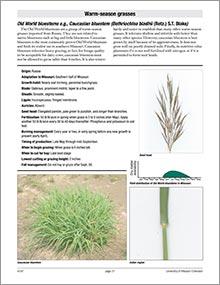
Dairy Grazing: Selecting the Right Forage, Page 18
Reviewed
Learn about Old World bluestems, such as Caucasian bluestem, their characteristics, adaptation, and management practices for optimal forage production.
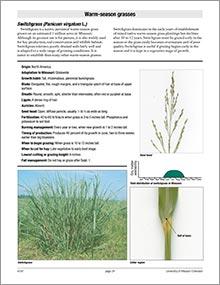
Dairy Grazing: Selecting the Right Forage, Page 21
Reviewed
Switchgrass is a hardy, warm-season grass ideal for pastures and hay. It thrives in Missouri soils and provides quality grazing when managed properly.

Dairy Grazing: Selecting the Right Forage, Page 24
Reviewed
Annual lespedeza is a pasture legume providing high-quality forage in midsummer, thriving on infertile soils, and not causing bloat in cattle.

Dairy Grazing: Selecting the Right Forage, Page 27
Reviewed
Learn about Hairy Vetch, a winter annual legume used for spring pasture and silage. Discover its growth habits, benefits, and best practices for grazing.
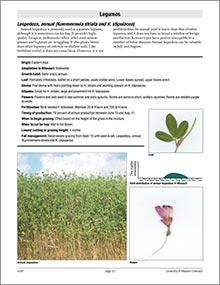
Dairy Grazing: Selecting the Right Forage, Page 30
Reviewed
White clover is a legume suitable for cool, moist climates, providing high-quality forage for livestock. It may require careful grazing management.
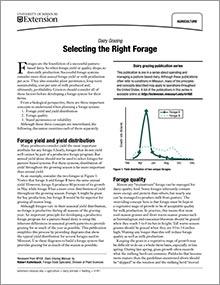
Dairy Grazing: Selecting the Right Forage
Reviewed
Dairy grazing publication series
This publication is one in a series about operating and managing a pasture-based dairy. Although these publications often refer to conditions in Missouri, many of the principles and concepts described may apply to operations throughout the United States.
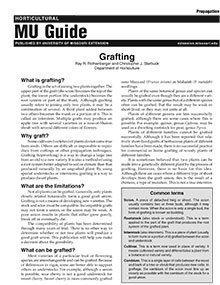
Grafting
Reviewed
Grafting is the act of joining two plants together and is a way to change a large tree from an old to a new variety. Visit our site to learn more.
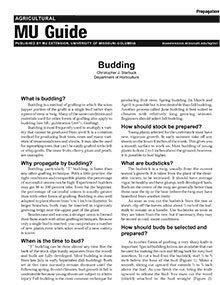
Budding
Reviewed
Budding is a grafting technique where a single bud is inserted into a plant stock, often used to propagate fruit trees and ornamental plants. The best time is in fall.
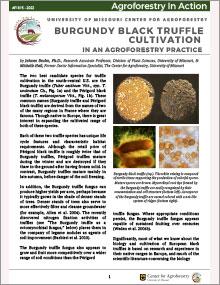
Burgundy Black Truffle Cultivation in an Agroforestry Practice
Revised
Editor's note
The following abstract describes a publication that is intended for distribution as a downloadable PDF.
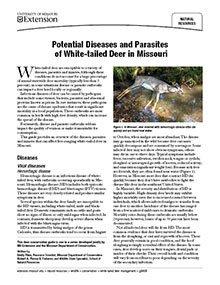
Potential Diseases and Parasites of White-tailed Deer in Missouri
Reviewed
White-tailed deer are susceptible to a variety of issues. Visit our site to learn about Potential Diseases and Parasites of White-tailed Deer in Missouri.
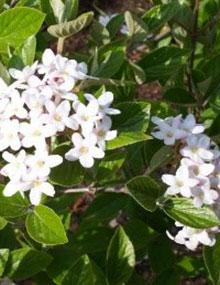
Gardening in the Shade, Page 03
Revised
Discover shade-tolerant deciduous shrubs like arrowwood viburnum, bottlebrush buckeye, and oakleaf hydrangea to enhance your shaded garden spaces.
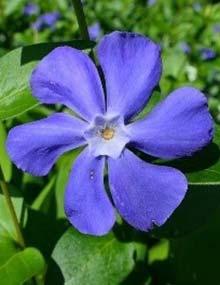
Gardening in the Shade, Page 06
Revised
Discover plants that thrive in low-light conditions and learn how to enhance your shaded garden with suitable selections and care tips.
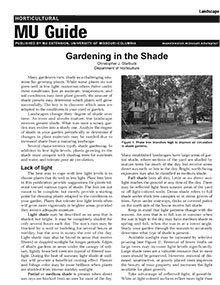
Gardening in the Shade
Revised
Many gardeners view shade as a challenging situation for growing plants. While some plants do not grow well in low light, numerous others thrive under these conditions. The key is to discover which ones are adapted to the conditions in your yard or garden.
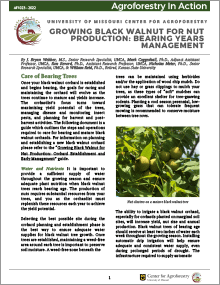
Growing Black Walnut for Nut Production: Bearing Years Management
Revised
Once your black walnut orchard is established and begins bearing, the goals for caring and maintaining the orchard will evolve as the trees continue to mature and yields increase. This guide outlines the steps and operations required to care for bearing and mature black walnut orchards.